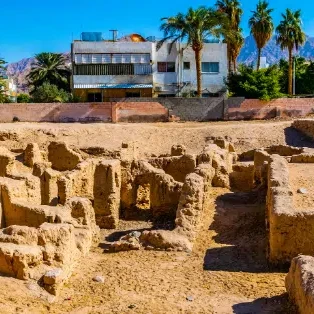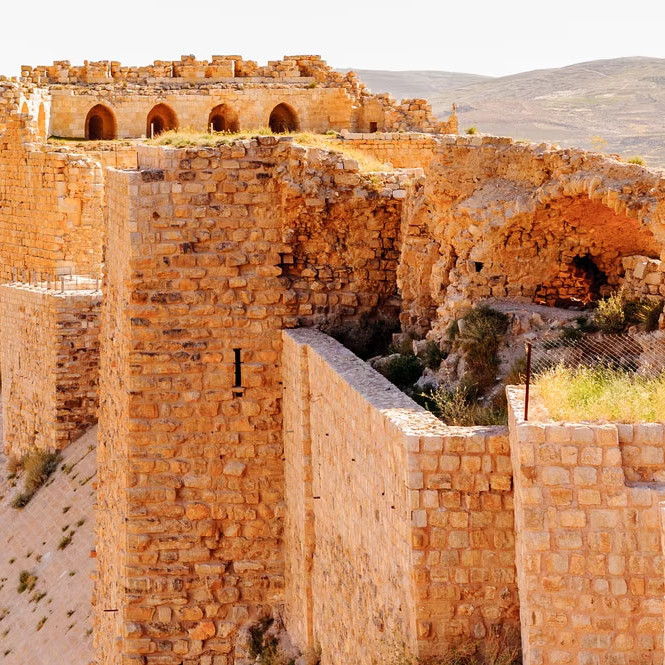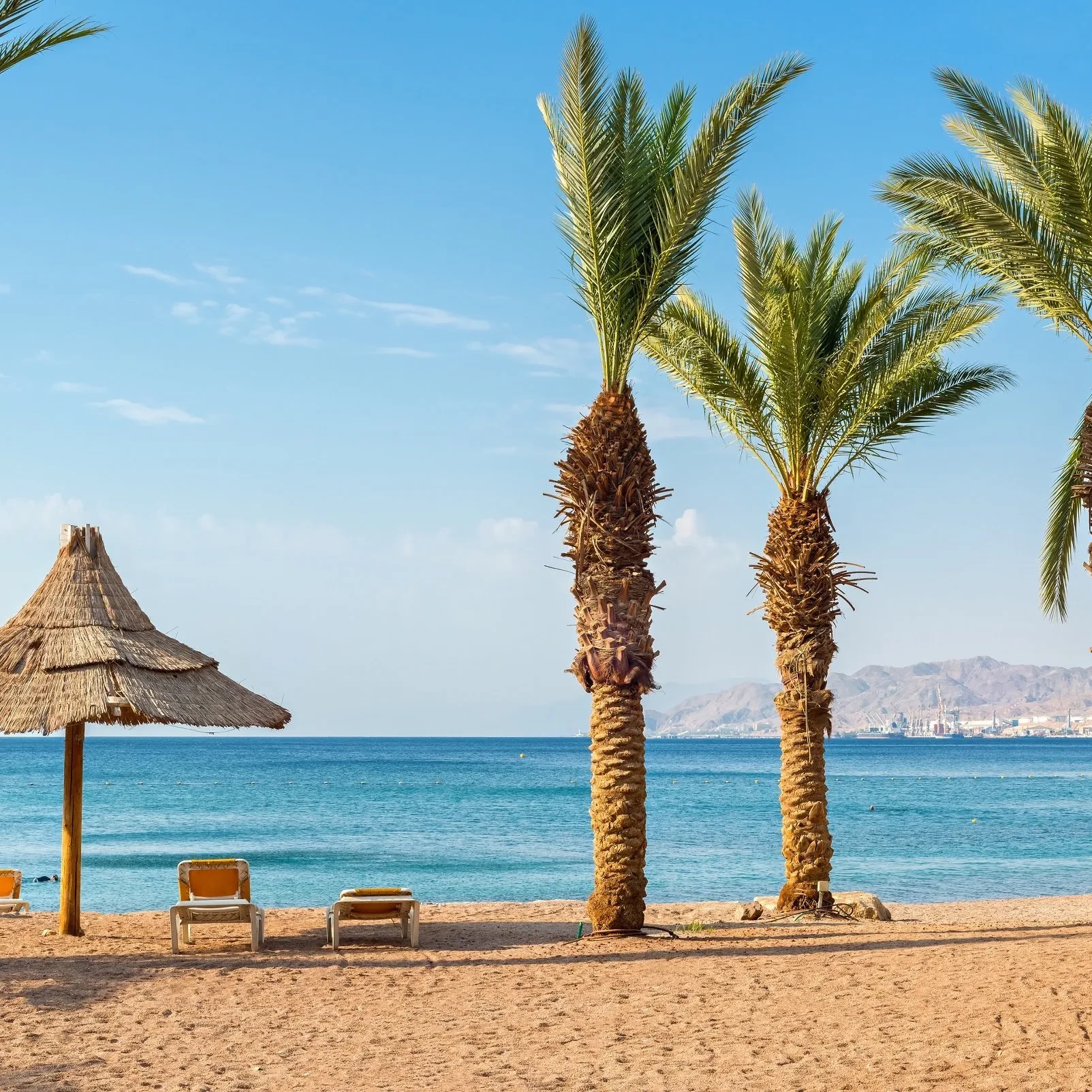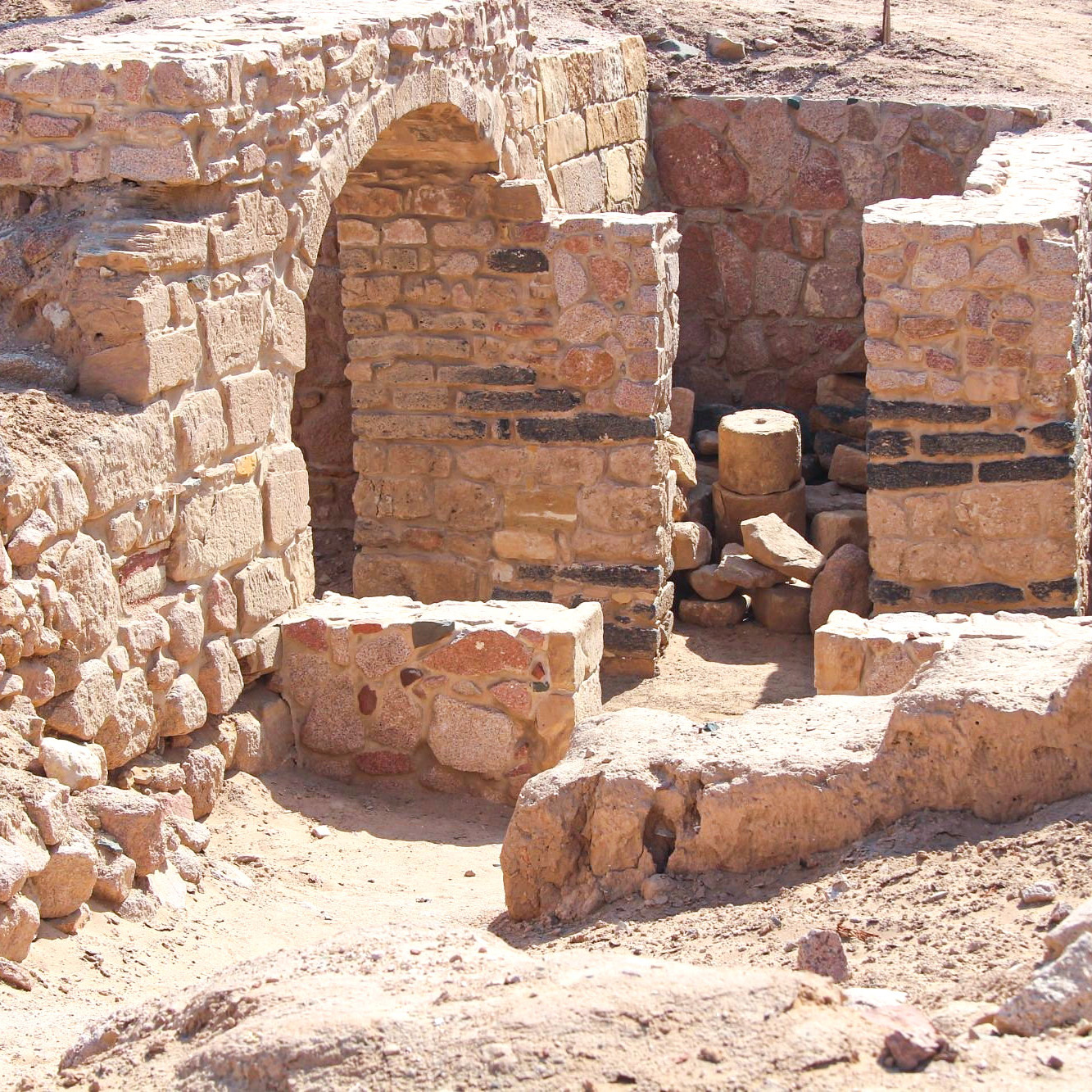
Madaba Archaeological Park
Mosaics, ruins, and remnants of daily life from Roman, Byzantine, and Islamic Madaba.
The Madaba Archaeological Park is a quiet, open-air site in the center of the city that gathers together some of Madaba’s most significant historical remains. Covering a mix of Roman, Byzantine, and early Islamic layers, the complex includes mosaics, columns, foundations of homes, and a stretch of original Roman road. It’s a compact but layered place, offering a direct look at the city’s long urban history.
What You'll See
The Church of the Virgin Mary
One of the site’s focal points is the Church of the Virgin Mary, built in the 6th century and rediscovered in 1887. Though largely in ruins, the church floor still holds intact mosaics, including a detailed geometric panel and inscriptions. The site is partially enclosed for protection, but walkways allow you to view it from above.
The Hippolytus Hall Mosaic
Next to the Church of the Virgin Mary is the Hippolytus Hall, part of a private Byzantine villa. Its floor mosaic is one of the most celebrated in the park and features figures from Greek mythology, including the hero Hippolytus, surrounded by intricate borders and decorative elements. The level of detail is unusually high for a residential mosaic.
Roman Road and Portico
A short section of original Roman road with its curbstones and paving is visible within the park. Alongside it, stone columns hint at a former colonnaded street. These elements provide a glimpse of the urban layout during Madaba’s Roman era and connect the religious and domestic structures in the park.
Other Finds
Scattered throughout the site are cisterns, arches, reused architectural fragments, and signs of rebuilding during later Islamic periods. Most structures are preserved at foundation level, giving a clear sense of layout rather than height.
Layout and Experience
The archaeological park is designed for walking at your own pace. Informational panels explain the significance of the different buildings and mosaics, with a few elevated walkways offering perspective from above. Though outdoors, parts of the site are shaded or covered to protect more fragile features.
Nearby Context
The Madaba Archaeological Park pairs well with other historic stops nearby, including St. George’s Church, the Church of the Apostles, and the Burnt Palace—all of which help form a broader picture of Madaba’s role in the region during Late Antiquity and beyond.
Location
Hours
Open Sunday – Thursday 8:00 AM–6:00 pm and Fridays & Saturday 9:00 am – 5 pm
Entrance Fee
$4.23
Are you ready to start discovering Jordan?
I decided to book a tour when I went to Jordan and they simplified my planning and enhanced my travel experience ! I’m leaving the link to the tour below in case you are interested!
More things to do in Jordan
St. George’s Church
St. George’s Church in Madaba, Jordan is known for its 6th-century mosaic map of the Holy Land—one of the oldest in…
Ruins of the City of Ayla
The Ruins of the City of Ayla in Aqaba, Jordan reveal the layout of a fortified Islamic town from the 7th century,…
Wadi Rum: Jordan’s Desert Dreamscape
Wadi Rum, also known as the Valley of the Moon, is a natural wonder located in the heart of Jordan. This desert of red…
Kerak Castle: A Fortress Above the Clouds
Kerak Castle is a large Crusader castle located in the town of Kerak in central Jordan. It is one of the most…
The Roman Theater in Amman: A Glimpse Into Jordan’s Ancient Past
Discover the Roman Theater in Amman—one of Jordan’s most iconic landmarks. Explore its history, what to expect during…
Beaches in Aqaba
Aqaba’s coastline offers access to quiet beaches, shallow coral reefs, and clear waters ideal for snorkeling and…
Aqaba Archaeological Museum
The Aqaba Archaeological Museum showcases artifacts from the city's Islamic, Roman, and Nabataean past—offering a quiet…
Everything You Need to Know About Visiting the Dead Sea from Jordan
Curious about floating in the Dead Sea? Discover why it’s called “dead,” how long you can float, what to do there, and…










